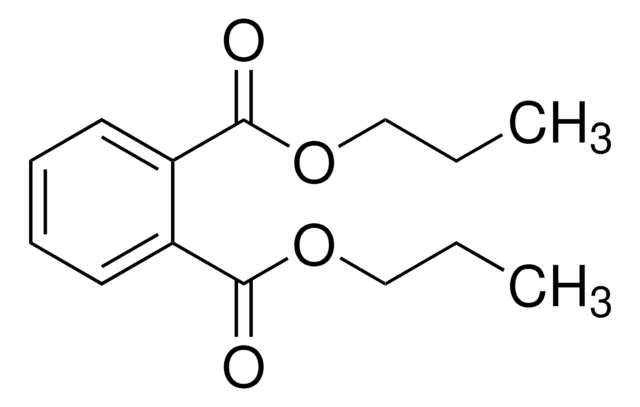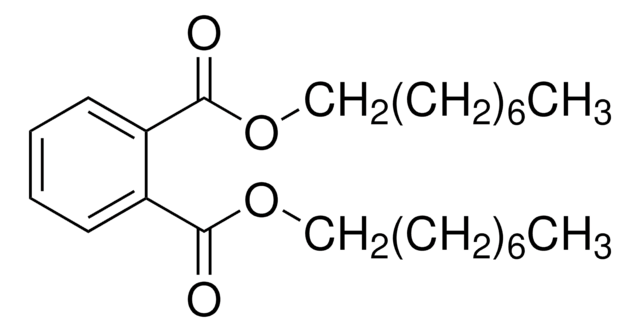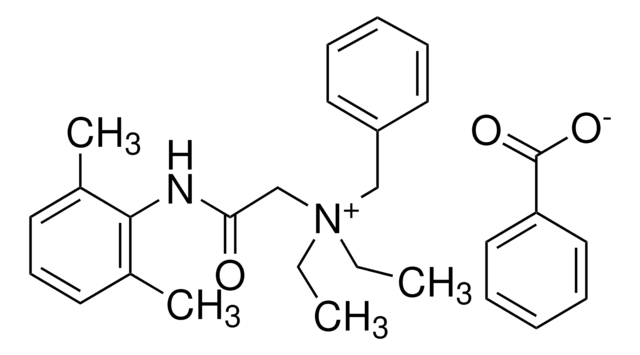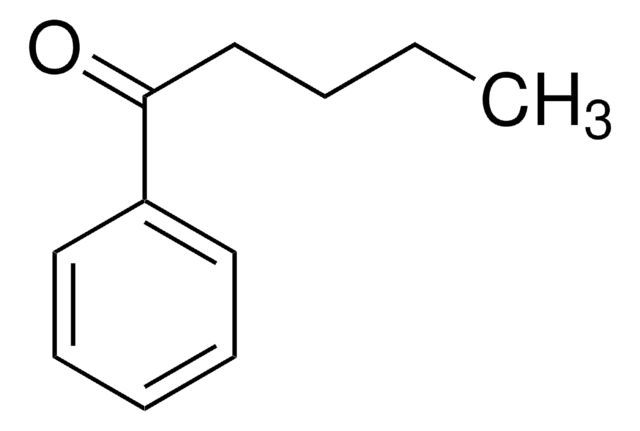W512206
Diethyl phthalate
≥99%
Synonim(y):
Anozol, Diethyl benzene-1,2-dicarboxylate
About This Item
Polecane produkty
pochodzenie biologiczne
synthetic
gęstość pary
7.66 (vs air)
ciśnienie pary
1 mmHg ( 100 °C)
Próba
≥99%
Postać
liquid
temp. samozapłonu
854 °F
granice wybuchowości
0.75 %, 187 °F
współczynnik refrakcji
n20/D 1.502 (lit.)
tw
298-299 °C (lit.)
mp
−3 °C (lit.)
gęstość
1.12 g/mL at 25 °C (lit.)
Zastosowanie
flavors and fragrances
Dokumentacja
see Safety & Documentation for available documents
alergen pokarmowy
no known allergens
Organoleptyczne
odorless
ciąg SMILES
CCOC(=O)c1ccccc1C(=O)OCC
InChI
1S/C12H14O4/c1-3-15-11(13)9-7-5-6-8-10(9)12(14)16-4-2/h5-8H,3-4H2,1-2H3
Klucz InChI
FLKPEMZONWLCSK-UHFFFAOYSA-N
Szukasz podobnych produktów? Odwiedź Przewodnik dotyczący porównywania produktów
Powiązane kategorie
Opis ogólny
Oświadczenie o zrzeczeniu się odpowiedzialności
Kod klasy składowania
10 - Combustible liquids
Klasa zagrożenia wodnego (WGK)
WGK 2
Temperatura zapłonu (°F)
338.0 °F - closed cup
Temperatura zapłonu (°C)
170 °C - closed cup
Środki ochrony indywidualnej
Eyeshields, Gloves
Certyfikaty analizy (CoA)
Poszukaj Certyfikaty analizy (CoA), wpisując numer partii/serii produktów. Numery serii i partii można znaleźć na etykiecie produktu po słowach „seria” lub „partia”.
Masz już ten produkt?
Dokumenty związane z niedawno zakupionymi produktami zostały zamieszczone w Bibliotece dokumentów.
Klienci oglądali również te produkty
Nasz zespół naukowców ma doświadczenie we wszystkich obszarach badań, w tym w naukach przyrodniczych, materiałoznawstwie, syntezie chemicznej, chromatografii, analityce i wielu innych dziedzinach.
Skontaktuj się z zespołem ds. pomocy technicznej







